
Club Med, which gets credit for starting the all-inclusive vacation concept in 1950, has about 70 beach and mountain resorts in 30-plus countries. The brand aims to remain known for all-inclusives as it becomes more family-friendly; this scene is from Alpe d’Huez Resort in the French Alps. Photo from Club Med.
As a much younger adult, I was cash-strapped but thrilled to pay one affordable price for pretty much everything needed in a vacation: lodging, meals, beer and easy access to a swimming pool, walkable beach, perennial sunshine.
But the longer the stay, the more restless my guy and I became with a confined location, the crowded swim-up bar, predictable buffet choices and repetitive entertainment. These comfortable but isolated resorts in Costa Rica, and then the Dominican Republic, limited our exposure to the rhythms of local culture too.
For an extra fee, we would get a quick, offsite introduction to cigar making, coffee production or cock fighting. We could pay to hike in a rain forest to watch howler monkeys and screechy parrots. Or board a sailboat to snorkel and spot dolphins while afloat in the Caribbean Sea.
We lost interest in all-inclusive vacations by 2004, while booking time in Jamaica, where Negril’s seven-mile beach is awash with seafood restaurants, cliffside bars, whiffs of ganja with reggae and steelpan music. We didn’t want to feel fiscally obligated to return to home base for every jerk chicken, rum punch or Red Stripe craving.
Now I’m intrigued with all-inclusives again because of how the concept has expanded, changed and gained new, significant players. Resort settings, personalities and price points are mushrooming too.
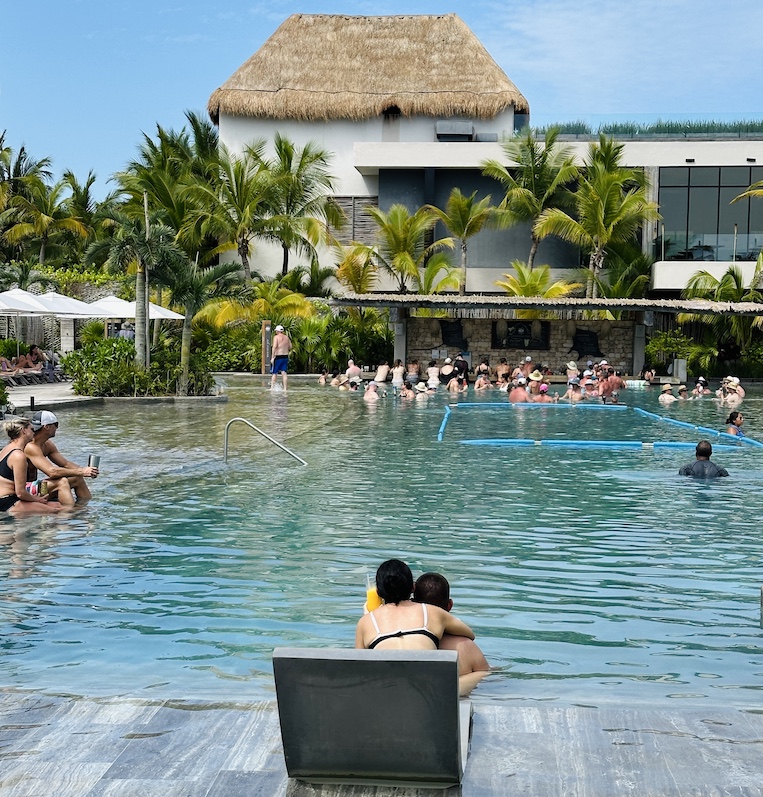
A roomy swim-up bar is one pool option at Secrets Moxché, an all-inclusive resort in Mexico that also has more private cenote reservoirs and Caribbean Sea beachfront. Photo by Mary Bergin
Such a surge
Expedia.com includes all-inclusive getaways as a top 2025 travel trend. At Hotels.com, searches using “all-inclusive” as a filter increased 60 percent from 2023 to 2024. Bookings for all-inclusive resorts in Europe rose 30 percent from 2023 to 2024, reports BoardingArea.com.
“Many new entrants are in the luxury and upper upscale segments, a substantial change from a sector that has long been comprised of midscale resorts,” notes Jones Lang LaSalle (JLL), a global real estate/investment management company that says the demand for all-inclusive resorts has skyrocketed.
Who’s driving the numbers? Business Insider credits Gen Z with “ushering in the all-inclusive era.” Within this age group – those born in or after 1997 – 42 percent say they would prefer all-inclusive accommodations when traveling.
Why? Less stress is a priority for this generation, and it’s easier to book an all-inclusive than plan a multi-point daily vacation itinerary. These young adults also are more willing to seek luxury, especially when framed as “good value.”
Online influence matters too. “Social media, especially TikTok, has helped to fuel the resurgence of all-inclusive resorts,” writes Meagen Drillinger for Travel Weekly. “The hashtag #allinclusive has blown up, racking up 538 million views in the past two years as Gen Z travelers share poolside views, gourmet meals and sun-soaked adventures that inspire others to jump on the bandwagon.”
How high of a price will Gen Z pay? That depends on the demographic within the demographic: The Wall Street Journal reports these young Americans are cutting back because of their economic struggles.
More players from the majors
Hyatt’s $2.7 billion acquisition of Apple Leisure Group (ALG) in 2021 made it the largest operator of luxury all-inclusive resorts worldwide, reports Business Insider. The first all-inclusive Marriott property opened in Cancun in 2023, and Kimpton will take its first all-inclusive dive in 2026. Hilton’s all-inclusive properties increased roughly 60 percent globally in five years, with newer forays in Europe.
“All-inclusive resorts are here to stay,” says Jacki Marks, ALG Vacation’s global head of trade brands. “As the category grows, so does the range of options for each travel style, budget and interests.”
In Hyatt’s Inclusive Collection are 140-plus resorts in Latin America, the Caribbean and Europe (42 of 45 are in Spain; others are in Bulgaria, Greece and Portugal). New this year is Hyatt’s acquisition of Playa Hotels and Resorts in Mexico, Jamaica and Dominican Republic.
Marks encourages bookings that involve an assist from a travel agent, who typically gets a 15 percent commission that already is built into the resort rate. “Not only can travel advisors help match you with the best resort for your group,” she contends. “They also have access to exclusive deals that aren’t available to the consumers when booking directly.”
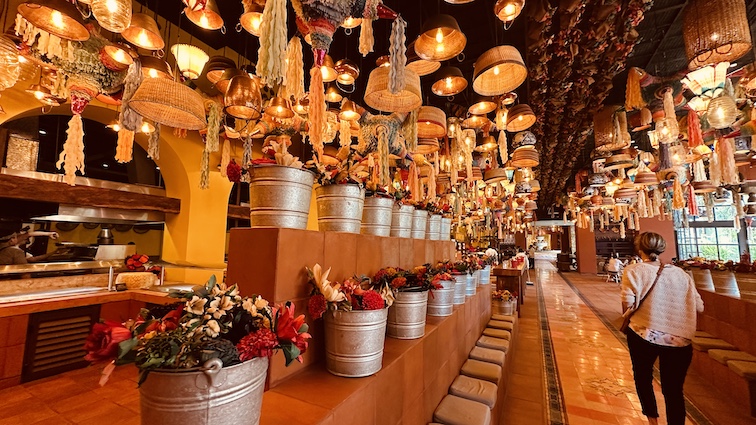
Décor has an eclectic, artsy flair at Hotel Xcaret Arte, an all-inclusive resort open since 2021 near the popular Xcaret eco park and cultural folk shows in Mexico. Photo by Mary Bergin
Multiple personalities
Eleven distinct brands split Hyatt’s all-inclusives into subsets. Some cater to only adults. Others are family friendly. Online descriptions address best choices for a girlfriend getaway, destination wedding, corporate incentive trip, multi-generation family reunion, experiential vacation.
One example of the latter is Hotel Xcaret Arte, Playa del Carmen, Mexico. Open since 2021, it takes a deep dive into artistic expression. Think sculptures and wall art by Mexican artists, creative cooking and salsa dance lessons for guests, immersive art workshops for beginner to advanced students.
Add access/shuttles to Grupo Xcaret attractions, such as the underground rivers and cultural folk shows of popular, nearby Xcaret eco-park.
For couples or families on a tight budget, Marks recommends Sunscape, “colorful, high-energy resorts that offer great value with meals included and a full schedule of daily activities.” In Europe, Alua resorts “give groups flexibility with half-board, full-board or all-inclusive rates,” to address vacationers’ budget limits.
But expect to spend hundreds to thousands per night (and often per person) for the modern-day all-inclusive vacation. Starting rates depend on time of year, length of stay, the resort, dining and lodging choices.
One high-end example: A two-story penthouse suite with oceanfront view at the all-inclusive, adults-only and AAA five-diamond Impression Moxché by Secrets, south of Cancun, Mexico, is a minimum of $6,736 for two (the maximum number of occupants allowed) per night. Accommodations span 2,066 square feet and include a private terrace with plunge pool; amenities include a private butler.
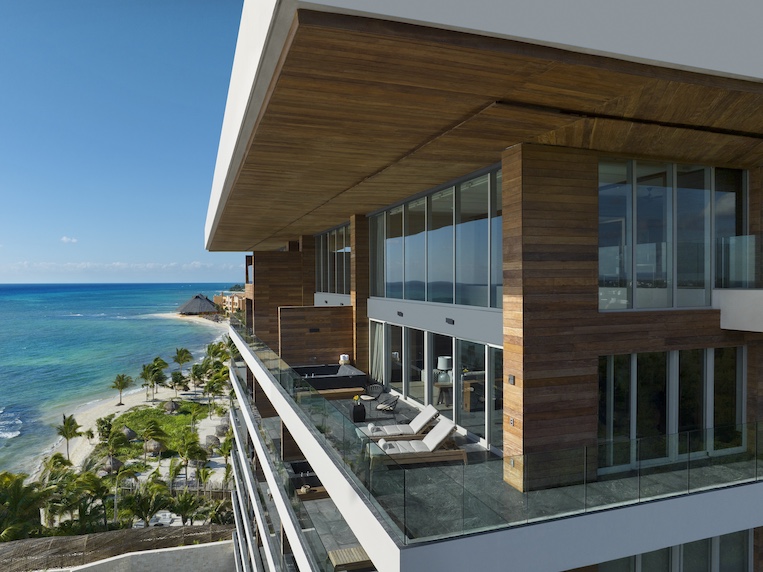
At Impression Moxché by Secrets, a more elite all-inclusive next to Secrets Moxché, lodging for two is a two-story penthouse. Photo from Impression Moxché by Secrets.
Exclusive access, experiences
These types of getaways “fit a similar need as a cruise, but on land rather than on a boat,” asserts Beyer Brown, a global hospitality procurement company. “Planning the itinerary is as simple as knowing your arrival and departure dates. Additional activities can be booked in advance, but many prefer to see where the day takes them in the moment.”
Although there may be one daily price for the basics, a resort may offer multiple tiers of one-price luxury, depending on the type of lodging, amenities and activities onsite.
Michelin-star chefs, top-shelf spirits, villas built over water, submerged restaurants, 24/7 butler service, private pools and elaborate spa services all are possible, but at a higher fee. A unique example: Elite lodging at Sandals Dunn’s River in Jamaica includes access to a private rooftop for stargazing, led by the Stargazing Concierge.
Corporate Wellness Magazine describes the all-inclusive as “a popular choice for wellness travelers due to their ability to provide everything a guest needs in one seamless experience.”
Personalized exercise plans, meal plans and spa programs can target specific health concerns or pure relaxation. Cooking classes can emphasize healthy, gourmet fare. Lush settings in nature enrich the wellness experience.
Back to the beginning

On the Seasoul lunch and dinner menus at Secrets Moxché in Mexico are made-to-order seafood specialties. Photo by Mary Bergin
Entrepreneur Gérhard Blitz of Belgium, an Olympian in swimming and water polo, gets credit for creating the all-inclusive vacation in 1950. His first Club Méditerranée – Club Med – was a nonprofit effort on the Spanish island of Mallorca, and accommodations resembled an Olympics village. Think tents on the beach for lodging, singalongs around a campfire, shared meals, exercise classes. No electricity or running water.
“The aim in life is to be happy,” Blitz and co-founder Gilbert Trigano proclaimed. “The place to be happy is here. And the time to be happy is now.” They reportedly turned down 10,000 requests from would-be vacationers that first year.
Club Med’s reputation morphed as the number of resort locations quickly grew.
“These wholesome beginnings took on a more hedonist vibe as social mores evolved during the 1960s and 1970s,” writes the magazine France Today. “The friendly atmosphere, free-flowing cocktails and sultry summer evenings made holiday romance easy to find, and Club Med began attracting hordes of singles in search of a good time.”
Under the Club Med name today are about 70 all-inclusive beach and mountain resorts in 30-plus countries. The plan is to open three to five new resorts (including a mountain resort) annually.
The brand aims to become more family-friendly, eco-aware and upscale – as other European-based developers brainstorm about how to stake out an all-inclusive niche that attracts more Europeans.
“The segment hasn’t quite caught on with travelers throughout Europe,” notes CoStar, whose specialty is commercial real estate analysis. Among the reasons: Appropriate spots for new, semi-remote, beachside developments are not plentiful; government regulations and construction costs are prohibitive.
Mindset is another issue: European travelers are less accustomed to large-scale resorts and the one-price vacation package, mused Maria Zarraluqi of Spanish-based Melia Hotels International during the 2025 Atlantic Ocean Hotel Investors’ Summit.
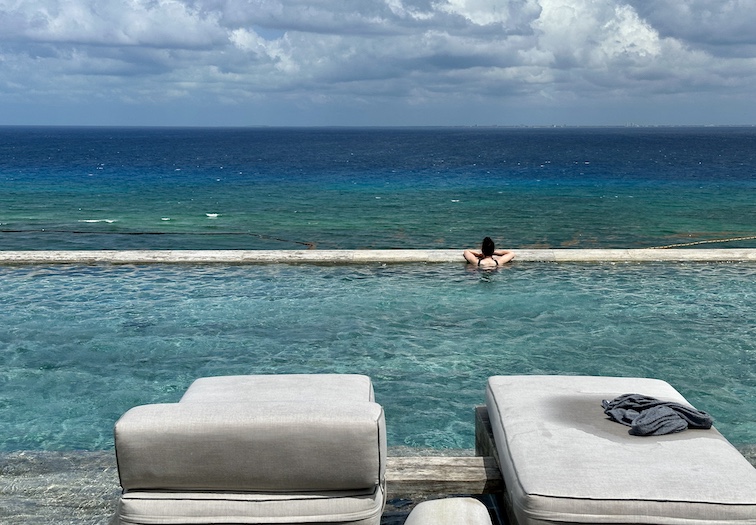
A rooftop infinity pool and lounging area at Secrets Moxché, near Playa del Carmen, Mexico, is accessible to upper-tier guests at the all-inclusive resort. Photo by Mary Bergin
Balkans Finally Discovered
That said, the Canary Islands and Balkan nations are among targeted locations for new all-inclusive resort development. Marks of ALG Vacations mentions Asia as “poised for growth,” which means “the future of all-inclusive travel is wide open.” Club Med and Rixos already are developing all-inclusives there (in Thailand and Vietnam, respectively).
Marks expects “even more personalization, sustainability, thoughtful design and locally inspired experiences” as the one-price vacation continues to evolve, “while keeping the ease and value that make this model so appealing.”
Much of it began with all-you-can-eat buffets, tokens for alcoholic drinks, twisting bath towels into the shape of a swan, arranging rose petals into the shape of a heart.
Now each resort produces more sophisticated ways to surprise and pamper – sometimes at an additional cost.
For me, late-spring overnights at Secrets Moxché – an all-inclusive, luxury resort for adults near Playa del Carmen (40 miles south of Mexico’s Cancun) – were upgraded to “preferred club” status. That included automatic access to a rooftop lounge, restaurant, infinity pool and bewitching views of the sea.
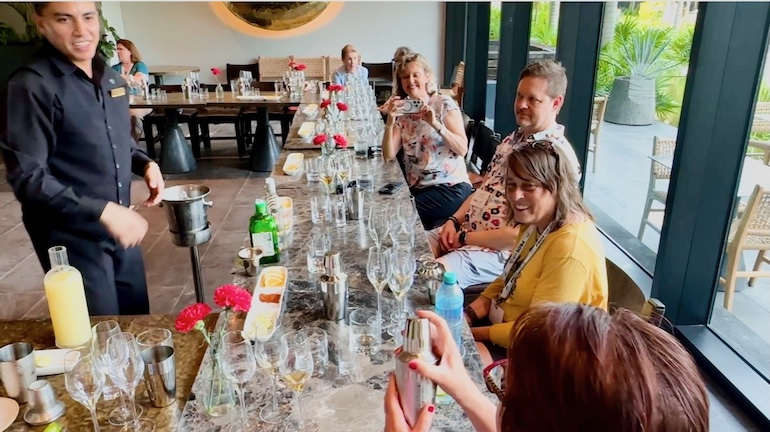
Guests at the Secrets Moxche all-inclusive resort learn how to make the perfect margarita and discern one type of tequila from another. Photo by Mary Bergin
All It Takes Is Money
Every guest gets access to multiple swimming areas – seven pools and three manmade versions of natural underground cenote reservoirs – on ground level. Casual cocktailing at multiple venues is standard too, but a two-hour and small-group tequila-tasting class requires an additional charge.
Restaurants are an attractive mix of buffets and full-service restaurants, but premium steak cuts and high-end wines are among the upcharges on menus. One notable exception: the four-diamond and softly lit Bisou, where French cuisine includes Beef Wellington, a specialty that is available to all who are able to snag a table.
Mary Bergin‘s last story for EWNS was about St. Nicholas, the Turkish saint most of the world knows as Santa Claus.

